Thought I'd share some pictures of the upgrade I did on my 27' sailboat
First, the main DC electrical compartment. On the top-right side of the image is a 460Ah 2p4s LiFePO4 battery, managed by a REC ABMS. The Blue Sea 7713, and Lynx Distributor are on the high side. The low side of the DC system (just below the photo) is controlled via Victron Smart BatteryProtect. The Victron SmartShunt is used as an Energy Meter for the DC loads on the boat. The Black battery switch is a DC Disconnect for our MultiPlus II inverter/charger. From top to bottom, the feeds into the Lynx Distributor are Alternator, Inverter/Charger, Solar, and Battery Feed.
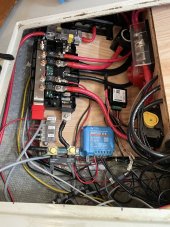
Next is the Victron Multiplus II 12/2000/80-50 inverter/charger. The picture was taken before we had finalized the wiring and closed up the lid.
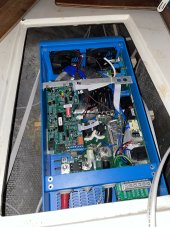
Lastly, for this part of the boat, the overview. All this equipment is located in the voids under the quarterberth.
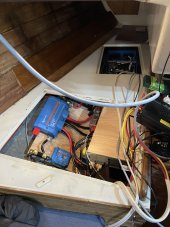
On the engine itself, we have our new (to us) 85A Hitachi Alternator, controlled by a Wakespeed WS500 advanced regulator. The engine is a Yanmar 1GM10 single cylinder, 10HP (well, 10HP 40 years ago) diesel. However, when we derate the alternator to 35A, it can produce that 35A continuously, and the alternator only heads up to 52C. We can flip a toggle switch, and kick the alternator to 80A, but at that point we start smelling belt. We may derate to 65A or so, to see if that makes a difference.
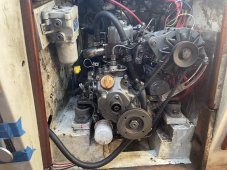
In the Lazarette, we have both the Starter battery (a Group 24 Marine Start battery) which is maintained by a Victron Orion Tr 18A DC to DC charger. We also have mounted in there the Wakespeed Regulator. It communicates with both the Victron Cerbo GX and the REC ABMS to properly manage the battery. It's an incredibly slick system. There's also the shunt for a BMV-712 that is being used to monitor the start battery.
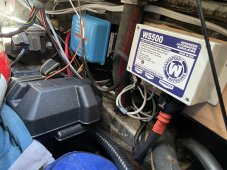
Overall, the system so far has been extremely nice to work with. The remote monitoring provided by the Cerbo GX has been second to none. I'm very happy with the system, and it worked flawlessly over the first week we actually took it out on the water.
First, the main DC electrical compartment. On the top-right side of the image is a 460Ah 2p4s LiFePO4 battery, managed by a REC ABMS. The Blue Sea 7713, and Lynx Distributor are on the high side. The low side of the DC system (just below the photo) is controlled via Victron Smart BatteryProtect. The Victron SmartShunt is used as an Energy Meter for the DC loads on the boat. The Black battery switch is a DC Disconnect for our MultiPlus II inverter/charger. From top to bottom, the feeds into the Lynx Distributor are Alternator, Inverter/Charger, Solar, and Battery Feed.

Next is the Victron Multiplus II 12/2000/80-50 inverter/charger. The picture was taken before we had finalized the wiring and closed up the lid.

Lastly, for this part of the boat, the overview. All this equipment is located in the voids under the quarterberth.

On the engine itself, we have our new (to us) 85A Hitachi Alternator, controlled by a Wakespeed WS500 advanced regulator. The engine is a Yanmar 1GM10 single cylinder, 10HP (well, 10HP 40 years ago) diesel. However, when we derate the alternator to 35A, it can produce that 35A continuously, and the alternator only heads up to 52C. We can flip a toggle switch, and kick the alternator to 80A, but at that point we start smelling belt. We may derate to 65A or so, to see if that makes a difference.

In the Lazarette, we have both the Starter battery (a Group 24 Marine Start battery) which is maintained by a Victron Orion Tr 18A DC to DC charger. We also have mounted in there the Wakespeed Regulator. It communicates with both the Victron Cerbo GX and the REC ABMS to properly manage the battery. It's an incredibly slick system. There's also the shunt for a BMV-712 that is being used to monitor the start battery.

Overall, the system so far has been extremely nice to work with. The remote monitoring provided by the Cerbo GX has been second to none. I'm very happy with the system, and it worked flawlessly over the first week we actually took it out on the water.



